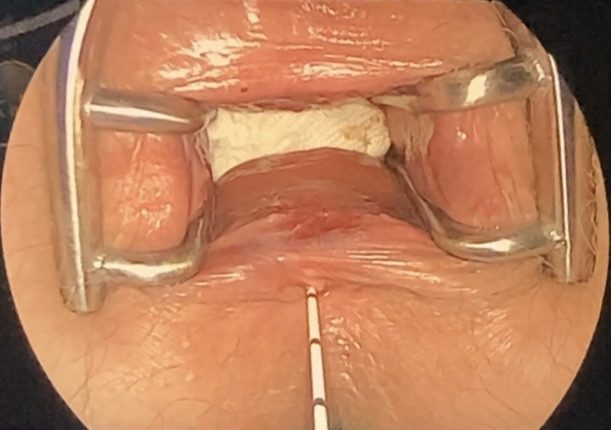Anal Fistula Surgeries can be simple and very complicated depending on the location and anatomy of the fistulous tract. Traditionally Fistulotomy and Fistulectomy were the two surgeries handling these problems. Fistulotomy is cutting up the fistulous tract and letting it heal up. It heals relatively fast and the risk of it coming back (recurrence rate) is nearly zero. It is however only applicable to superficial (low, running close to the anal opening in all its length) fistulas, which encircles no or very little anal sphincter muscle. Because that little muscle gets cut.
For higher and more complex fistulas Fistulectomy is the traditional surgery, which is cutting out the fistulous tract from the healthy tissue and reconstructing the anatomy. Very few surgeons do this procedure, it is delicate and needs a very detailed knowledge of the anatomy, still it is burdened with high recurrence rate, in case stool can get through the sutures and infection destroy the reconstruction. To avoid this, a temporary stoma can be placed, but it is too much of a burden for most patients to accept this surgery.
Minimally invasive anal fistula surgeries
The modern way of dealing with higher and more complex (and sometimes also with the simple) fistulas is to preserve the anal sphincter and so the fistulous tract the way it is and to obliterate it with different methods.
VAAFT (Video Assisted Anal Fistula Treatment)
In this method a 5 mm in diameter little endoscope is used to explore and clean out the fistula tract and then it is obliterated by fibrin glue. The internal opening of the tract inside the anal canal has to be closed with a stapler or an advancement flap (little carpet of anal lining pulled over the hole inside the anal canal). The external opening is left open and heals up over a few weeks.
FiLac (FiLac – Fistula Laser Assisted Closure)
FiLac surgery requires the definition of the tract by a seton suture/drain, which is ideally placed in during the abscess drainage surgery and kept in for 4 to 6 weeks or, alternatively placed in at the start of the FiLac surgery. Guided by this seton a less than 2 mm in diameter laser probe is navigated through the length of the tract and the laser energy delivered to destroy the lining of the tract and seal it off. The internal opening is stitched or sealed with laser. The external opening is left open and heals up over a few weeks.
These minimally invasive anal fistula surgery methods, or also called anal sphincter muscle preserving methods, come with less postoperative pain and an easier post operative healing, but the risk of recurrence is higher: depending on the complexity of the fistula and the combination of methods applied, it is around 15-25%.
What to expect when going for this procedure?
Anal fistula surgeries are done under general anaesthesia (or at least deep sedation), so before the procedure you need to have a meeting with the anaesthetist. Because of the anaesthesia, a period of 6 hour fasting is required before surgery. There is no need for a thorough bowel preparation, but in case you could not go to toilet in the morning before surgery, you will be given an enema (a small bottle of washout of the rectum from below). If you prefer, your doctor can prescribe this for you, and you can give it to yourself at home in the morning. Otherwise your day care nurse will give it after you settled in at the day care unit. You will be requested to come a few hours before your scheduled procedure time for these preoperative necessities.
After the surgery you will feel minimal pain, because your doctor will give you a numbing injection, during surgery, to the nerves of the anal area (pudendal nerve block). You will receive a detailed explanation about the medications prescribed, and how to take them: you will be given anti-inflammatory painkillers, local anaesthetic jelly and antibiotics if necessary.
Your doctor will let you go home a few hours after the procedure, once you are fully awake, pain free and managed to eat/drink and pass urine.
Your doctor will give you a number to contact her in case of emergency as well as arrange a free follow-up visit for you within 2 to 5 days.
